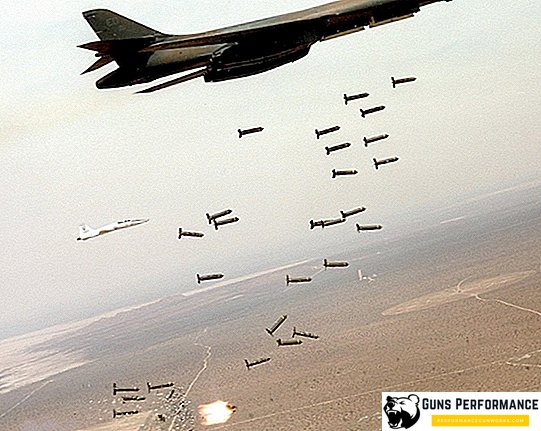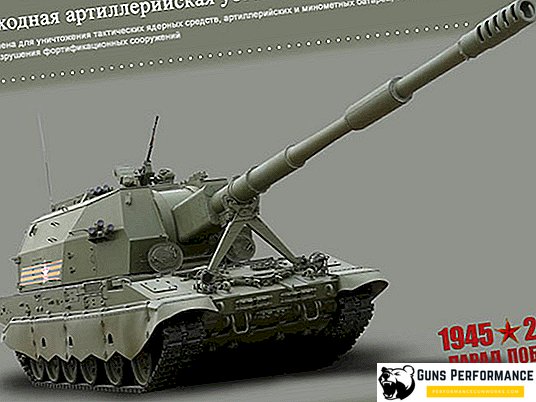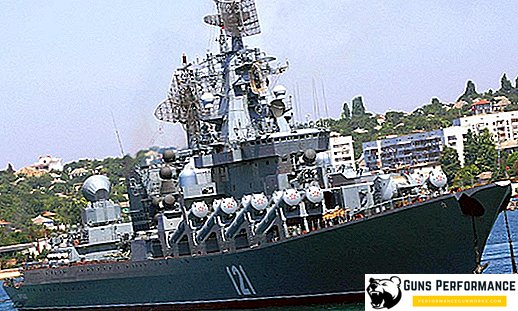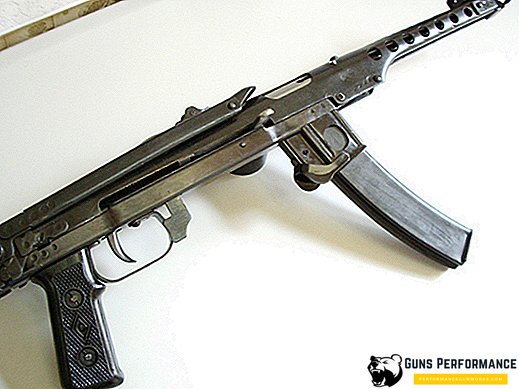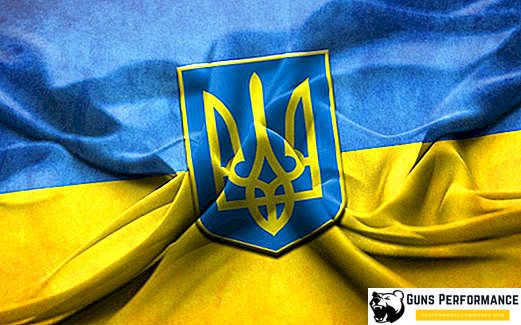
In recent years, the topic of Ukraine has received so much attention from the Russian media that Russians see Ukrainian state symbols almost more often than the emblem of Russia. The blue-yellow flag and the Ukrainian state emblem in the form of a characteristic trident were the main symbols of the revolutionary Kiev Maidan, whose cadres spread all over the world.
Ukrainians love their state symbols, they decorate cars, clothes, and dwellings with pleasure. Ornaments and tattoos in the form of a trident are very popular among young people.
And, of course, this symbol is marked on government documents, coins and bills, military equipment of the armed forces of Ukraine.
What does this symbol mean? When did he appear? And why Ukraine chose just such a coat of arms?
The state emblem of Ukraine has a very long history, the sources of which are lost in the gray-haired depths of centuries. However, first it is worth giving a brief description of one of the three main state symbols of Ukraine.
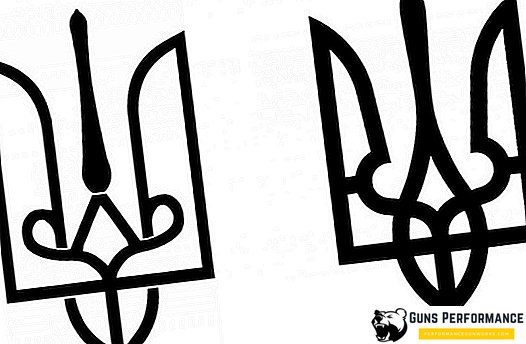
Description
The emblem of Ukraine, along with the anthem and flag, is one of the main official symbols of the state. There is a large and small emblem of Ukraine. The central object of both emblems is a trident. At present, only the Small Emblem is officially approved, a large one exists only in the form of a project that has not yet been approved at an official level.
The small coat of arms of Ukraine is a blue shield with a golden border, which depicts a golden trident. It was officially approved by the Verkhovna Rada of Ukraine in February 1992, shortly after the independence of the country was declared.
However, it was also impossible to quickly adopt the Great State Emblem. A competition was announced that lasted for several years. In 1996, the draft of the Constitution of Ukraine gave a description of the Big Emblem, but he himself was never approved. The development of projects was delayed until the middle of the zero years; a special commission was created to deal with this issue.
Only in 2009, the Ukrainian government approved the draft of the Great State Emblem, after which it was submitted to parliament. However, the deputies for the project did not vote. Moreover, the people's representatives submitted several sketches, which further complicated the situation. In the end, the vote was failed, and the Big Emblem was never approved.
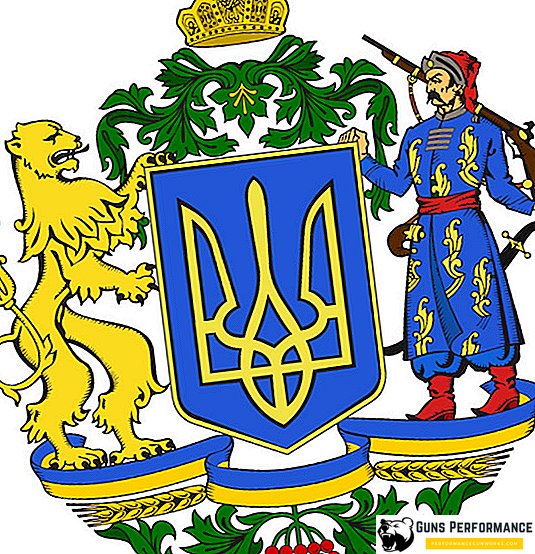
Now we should say a few words about the project of the Big Emblem of Ukraine. Its main detail is also a trident. He is depicted on a blue shield and occupies the central part of the composition (this part completely repeats the Small Emblem of the country). On the right side of the shield with a trident is a Zaporozhye Cossack with a musket, and on the left is a golden lion, standing on its hind legs. In the upper part of the emblem there is a crown, and on its lower part there are golden ears of wheat, a branch of viburnum and a ribbon of flowers of the Ukrainian national flag.
Each of these elements has its own meaning associated with the history of the Ukrainian lands. The Golden Lion is a symbol of the Galicia-Volyn principality, the emblem of Prince Daniel of Galicia - the only king in ancient Russian history. A Cossack with a musket on his shoulder is the emblem of the Zaporozhian Army, which existed from the 16th to the 18th century. The crown above the shield with a trident symbolizes the princely power of Kievan Rus. Kalina and wheat ears in the lower part of the coat of arms are traditional symbols of Ukraine, they mean the wealth and generosity of the Ukrainian land.
In fact, the main idea of the Big Emblem is the unity of the Ukrainian lands, the West and the East, which is based on the traditions of the statehood of Kievan Rus.
The absence of the official Big Emblem is, of course, an unfortunate omission of the Ukrainian authorities. However, the country has long been accustomed to the trident, considering it the main state symbol.
If we talk about the Big Ukrainian coat of arms, then the most interesting part of it, of course, is the trident itself. This heraldic element is much older than all the others. Its history begins long before the fierce and militant Normans founded a city on the banks of the Dnieper - the future capital of the ancient Russian state. This symbol should be discussed in more detail.
Trident, as one of the most ancient symbols of humanity
The traditional interpretation of the trident on the Ukrainian state emblem is its Norman origin. This version is the most common among historians and connoisseurs of heraldry. However, the history of this symbol is much richer and more interesting.
The trident as a symbol was used by many nations, starting with the most ancient cultures. Especially often this symbol was used by peoples who were related to the sea. The reason for this lies on the surface: the trident was a fishing instrument, for good reason it is associated with the ancient Greek sea god Poseidon.
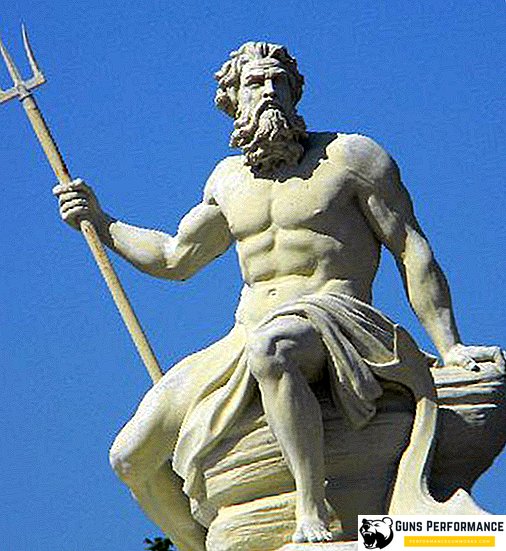
The ancient Sumerians had a trident armed with the goddess Inanna, the main female deity in the pantheon of this people. According to Sumerian mythology, Inanna was originally the ruler of the fairy-tale country Aratta - it is something like Tibetan Shambhala or Russian Belovodye.
In Akkadian-Sumerian mythology with a trident, another god was depicted - Ishkur, the lord of thunder, storm and lightning. The water element obeyed him, Ishkur could cause floods and rains.
The trident was an attribute of the Hittite gods, its images were found in the temples of the Minoan civilization. This symbol was widely represented in the beliefs of the ancient Indians.
In the Vedic tradition, the trident is the invariable attribute of the "water" god Varuna. Scientists believe that the cult of this deity (and with it its symbol) brought arias to Hindustan. Later, the trident became an integral part of one of the main deities of Hinduism, the supreme god Shiva. His spouse, the warrior Durga, and the fire god Agni are also armed with a trident.
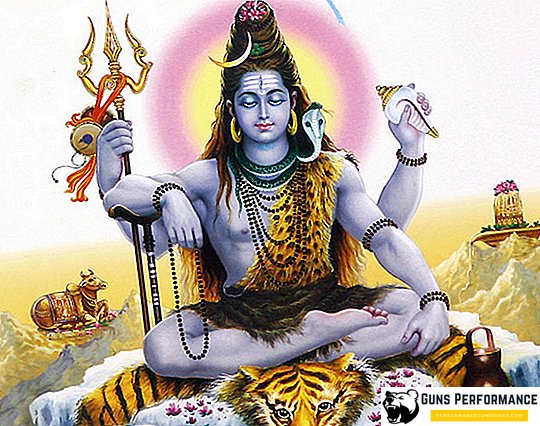
The trident is one of the central symbols of Buddhism: it denotes the Three Jewels of the Buddha.
As you can see from the above, the trident is a very common symbol in ancient cultures. More often it was used by the people connected with the sea, or those who lived near the sea earlier.
The trident was very common during the Middle Ages, and all over the Eurasian continent: from the Mongolian steppes to the Norwegian fjords. True, in the medieval period there are no longer the image of the trident itself, but its stylized symbol. It was used as a military emblem, as a symbol of state power, applied to the seal and banknotes.
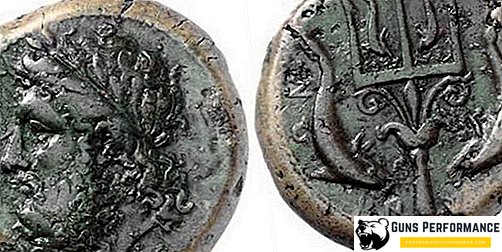
It should be noted that in the early Middle Ages, coats of arms did not exist as such. Heraldry appeared only in the XII century.
Along with the trident, a bident was used for the same purpose. The most famous noble families, the distinctive symbol of which were the tridents, are Rurikovich and Bordzhiginy. The most famous representative of the latter is the great conqueror of half the world, Genghis Khan.
Archaeologists often find images of tridents in the countries of Central Asia: in Tajikistan and Uzbekistan.
The trident-tamga was a sign of the Girey clan - the founders and rulers of the Crimean state.
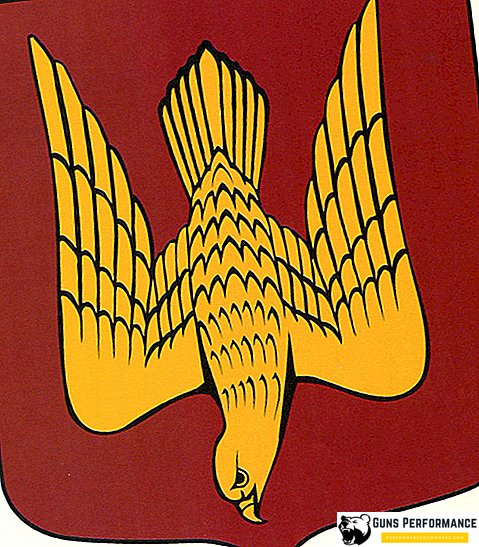
Most historians believe that the trident was brought to the Russian lands by the Vikings, who are considered to be the founders of the ancient Russian state. The trident was a family sign of princes from a sort of Rurikovich. In general, it should be said that the trident and bident were very popular among the Varangians.
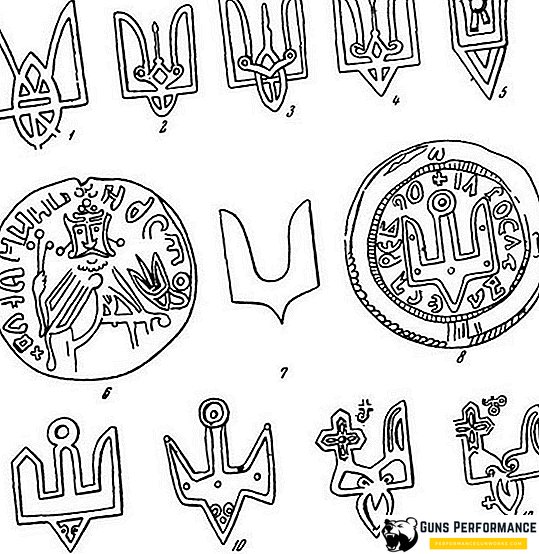
If we talk about the coat of arms of Rurikovich, then it is believed that their trident is a stylized image of the Falcon Falcon, the spirit, which is usually depicted as a bird of prey. This fantastic character exists in Scandinavian and Slavic mythology.
The trident can be a stylized image of another bird - the crow, which the Scandinavians associated with Odin - the main deity of their pantheon. The image of a crow is often found on old Scandinavian coins, the Vikings put it on the battle banners, amulets, jewelry.
In any case, the original trident was simply familiar to the Rurik family, and later, with the development of the ancient Russian state, it became the official symbol of the country. It began to be put on seals and coins, used in diplomatic missions.
Further history of the Ukrainian coat of arms
After the collapse of Kievan Rus, several principalities were formed on its territory, each of which had its own symbolism. In the first half of the 13th century, the Galitsko-Volyn principality increased significantly. His elevation is largely associated with the name of Prince Daniil Galitsky - a talented military leader, diplomat and political figure. His coat of arms was a lion, standing on his hind legs.
In the 16th century, a new military-political structure appeared in the Left-Bank Ukraine - the Zaporizhian Sich (Zaporizhia Army). Its emblem was a Cossack with a musket (self-made) on his shoulder. At the beginning of the 17th century, under Hetman Sagaidachny, this image became the official emblem of the Zaporozhian Cossacks and was used on battle flags, seals and documents. It is curious, but on the geographical maps of Ukraine-Rus (as the Ukrainian lands were then officially called) of that period, a Cossack with a musket is depicted.
The question of the national symbol rose again sharply in Ukraine after the February Revolution and the proclamation of independence by the country. With the flag decided quickly, but discussions arose about the coat of arms.
There were several options: a Cossack with a musket, a Galician lion, a bow with arrows, a lion with Michael the Archangel, a cross with stars and a crescent. The historian Hrushevsky, who was the chairman of the Central Rada at that time, put the point in this dispute. It was he who said that of all the proposed options for the state emblem, the trident of the princes of Kievan Rus is the most appropriate.
At the end of 1917, a trident in the form of a state symbol first appeared on the banknotes of the Central Rada. And in January 1918, he was posted on the naval flag of Ukraine. And only after that, on February 25, 1918, the trident was officially adopted as the state emblem.
The trident was actively used in the award system, as well as in the signs and distinctions of the Ukrainian Insurgent Army.


